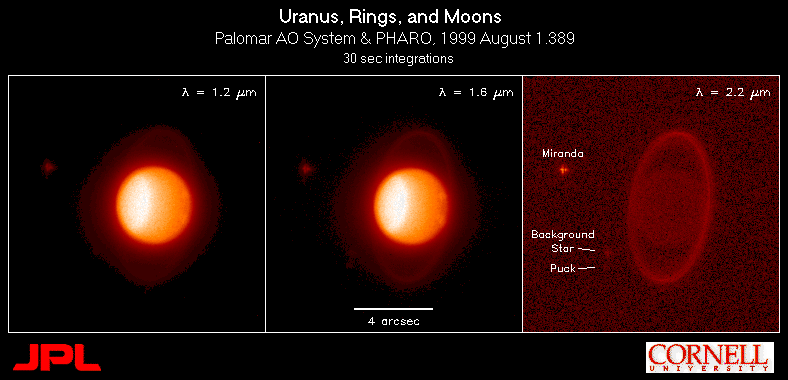
PALAO is a high-order adaptive optics system, built at JPL, that senses visible light from a natural guide star to correct the near-infrared light from a nearby science target. The science camera, PHARO, built at Cornell, offers an assortment of standard IR interference filters and a 1024x1024 HgCdTe chip with 0.025- or 0.040-arcsec pixels. Grism spectroscopy permits resolving power R~1500 (one band at a time); coronagraphy is possible with various focal-plane spot sizes and pupil masks.
*GUIDE STARS* brighter than V = 11 are fairly routine in
good seeing; our record is about V = 13.5. Targets should generally
be within about 30 arcsec of the guide star.
*PERFORMANCE*
in good seeing with a decently bright guide star can reach 70%-Strehl
at K; 20 or 30% is quite common.
Click on the buttons below to seek info or return to the Palomar homepage.
NOTE: observing with adaptive optics is somewhat more involved than with a standard spectrograph, so observers should allow more time for planning, executing, and reducing observations.
For further info please contact: P200 Instrument Support Last modified: Sept 17, 2020